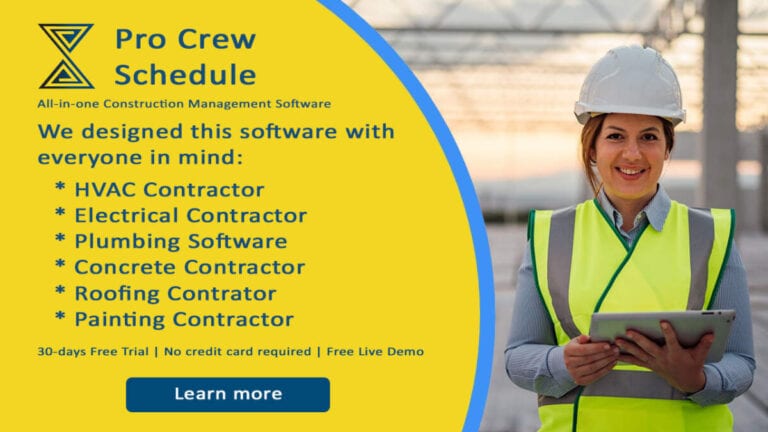Wearable technology is rapidly becoming the next biggest shakeup in the construction industry. Though the idea of superman strength is hard to believe and to happen, the basic concept of this piece of equipment called exoskeletons distributes weight to reduce accumulated stress on the body. According to the Q4 Commercial Construction Index, almost 23% of on-site contractors believe wearable technology will become generally implemented across job sites for the following years.
With the majority of construction professionals thinking that these advanced technologies further improve labor productivity, it isn’t easy to visualize a future where wearable techs, especially exoskeletons, aren’t staples in every construction site. Over the years, exoskeletons and their applications are becoming prevalent in the construction industry.
Below is a roundup of the top exoskeletons products available today in the U.S. market.
1. Sarcos Robotics’ Guardian GT
The Guardian GT robot can safely complete tasks in a few minutes, usually taking workers several hours to perform. The large-scale exoskeleton provides strength and dexterity for the operators. Mounted on an agile vehicle that is directly powered by diesel, natural gas, or even batteries, this single or dual-armed system can elevate and control payloads up to 1000 pounds using a small amount of human effort.
Using Sarcos’ proprietary tech, the operator may feel scaled forces usually experienced by the seven-foot-long robot arms. Whether the operator is riding inside the system or the robot, he may feel teleported from many miles away with this tech.
2. Levitate’s Airframe
Airframe, Levitate’s flagship product, relieves upper extremity muscles and joint strain. Apart from muscle strains, the discomfort of skilled trade workers and construction professionals who repeatedly lift their arms for demolition and construction activities is best relieved using Airframe. This particular device can lower exertion level by up to 85%, comfortably providing whole-day ergonomic support, reducing muscle fatigue.
Levitate also recently launched the fire-retardant Airframe model. This model can be utilized for hot work, especially in open-flame settings like grinding, sanding and welding.
3. Bioservo’s Ironhand
Worn underneath the regular work glove, this Ironhand glove can strengthen the worker’s grip and support possible lack of endurance while analyzing and collecting data for digitalized risk assessment. The Swedish-made system comes with pressure sensors and a back power unit that trigger motors inside the glove. It will then provide the wearer with an additional powerful grip.
Ironhand from Bioservo is available in four sizes, both for left and right hands. The glove’s grip can be adjusted easily to any task. It is now available in the U.S. market via distributor Rhino Assembly.
4. Ekso Bionics’ EksoZeroG
The EksoZeroG holds very heavy tools, particularly in aerial work environments such as standard scaffolding and scissor lifts. It can work with any tools the worker use for as long as it weights up to forty-two pounds. The operator should safely mount until the end of the ZeroG arm. Several devices are being attached using the sling. Also, the most common tools usually include chipping/demo hammers, rivet busters, rotary hammers, and even impact wrenches.
ZeroG also works well with huge grinders, which can easily attach with the use of a ring gimbal. Because of this exoskeleton, large grinding jobs become much easier by taking away the tool’s weight. This unit is mounted in a few minutes or less, according to Ekso Bionics.
5. Ekso Bionics’ EksoVest
The EksoVest is an exoskeleton suit designed for the upper-body. It supports the wearer’s arms, especially when assisting with various tasks ranging from chest height to overhead. EksoVest is low profile and very lightweight, making it comfortable to wear in any condition while allowing freedom of motion.
The lift force of this unit can be adjusted to fit operator preferences and application. The preferences are often from five to fifteen pounds per arm. It usually comes in two configurations for a specific worker– customized and general. The retail price, especially for the general configuration model, often starts at $6,995.
6. SuitX’s MAX System
The MAX system is a flexible exoskeleton that can always be adapted for various workplace tasks. The result can be a versatile system that allows workers to complete lower back, shoulder and leg-intensive tasks without getting any injury risks. Moreover, Comfortability remains while wearing MAX system all day.
MAX stands for Modular Agile Exoskeleton is generally composed of three exoskeleton modules/components: backX, shoulderX, and legX. Every module can be worn separately and in any combination, depending on the wearer’s needs. Laboratory evaluations on MAX indicate that the system can significantly reduce muscle force by sixty percent that is often required to complete tasks.
7. Noonee’s Chairless Chair
It is also called as “Ergoskeleton” for the ways it can help increase worker comfort. The Chairless Chair from Noone, a Swiss Frim, allows for easy, flexible, and quick changes between standing, sitting, and walking. This unit supports a maximum load of two-hundred ninety pounds, taking less than sixty seconds to take off and put on. The retail price starts at about $4200 for each unit.
This Ergoskeleton allows wearers to walk and move while wearing it, without even obstructing the workspace. Strenuous postures like squatting, bending, and couching are best avoided using this unit.
Using Exoskeletons in the Construction Industry
As stated earlier, the majority of contractors today are all the way expecting to utilize wearable techs by 2022. Starting now, there will be a massive jump in just two years. Exoskeletons didn’t enter the construction industry until 2015 and considering how recent it was, the prediction is considered a huge jump. The popularity of these machines and even construction techs like subcontractor scheduling software showcases the many changes currently happening in the industry as a whole.
Innovation. Technology. Efficiency. Safety.
These three buzzwords are leading the industry transformation pushing and driving construction faster than ever. Unlike other construction advancements such as BIM, drones, autonomous equipment, fleet management systems, and exoskeletons, they are wearable tech that can make workers even safer and improve careers, making employee management more efficient.
Another construction tech that improves safety, efficiency and productivity is Pro Crew Schedule. This crew scheduler software offers various project management features designed to help contractors and PMs manage projects and track people. It’s the leading software in the market. Get a live demo for FREE to experience it firsthand! Click here.
To proceed, here are various types of skeletons used today in construction. Take a look below:
- Crouching support – For tasks that often involve standing and crouching for extended periods, a chairless chair redistributes weight from the wearer’s knees by simply locking in place. It then provides the same ergonomic support a wearer can have by sitting in an ordinary chair. The timeline for the project is typically the most affected when anything goes wrong. But having these wearable techs on-site help in decreasing such issues. It doesn’t only increase labor productivity, but it also promotes a safer work environment.
- Arm Support – There are two types of exoskeletons purposely designed to support the worker’s arm, especially when working heavy power tools. These are power gloves and arm support limbs.
Power gloves are typically used to strengthen the wearer’s grip, increasing endurance. It especially useful when having to grip tools for a longer time. Arm support is the second type and this extra arm can alleviate the strain by making it appear to weigh less than it does.
- Back support – In managing construction projects and during the actual work, lifting and carrying heavy tools and objects is a typical scenario on-site. Hence, whenever reaching, lifting, and bending over to pick up any heavy objects, the strain caused to the back due to improper lifting may leave a toll on the body. But with a back support exoskeleton, workers can use the correct posture and lift techniques every time, preventing straining.
- Full-body support – Full-body support is beneficial whenever lifting and carrying heavy materials and tools around the site. By increasing the wearer’s strength, this particular exoskeleton can reduce strain on the majority of the body. Contractors can best monitor their crew using project task management software, especially those wearing this tech. This software tool can time-track, monitor members and their work performances.
Furthermore, exoskeletons aren’t a cheap endeavor. While in the past couple of years, costs have started to decline, this wearable tech is still an expensive item that most contractors aren’t ready to invest in. There’s a hesitation mainly because of the lack of overall standards regarding directions, guidelines and test results. However, if you choose to invest, you can start to develop your method and best practices for this tech, the same way others did. As you continue to share and refine, your initial hesitations will gradually decrease over time.
Opening the Door to the Future
Exoskeletons can be the start of accepting robots on-site. You can say that drones and other autonomous equipment are already some types of robots on site. However, exoskeletons can pave the way for another form of robot technology that enters the construction industry. These advancements offer a way to make the construction industry much safer and more accessible for all workers.







